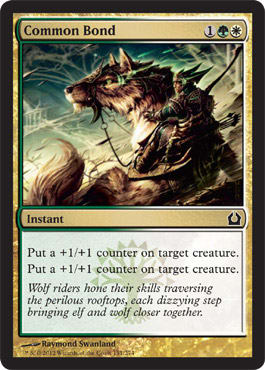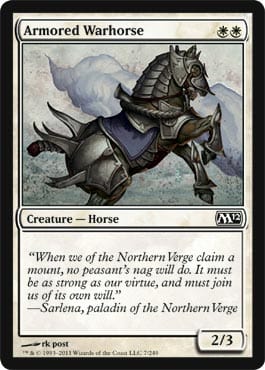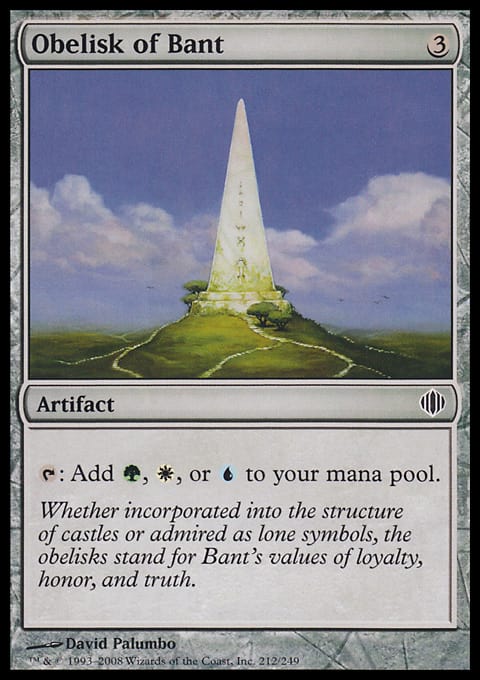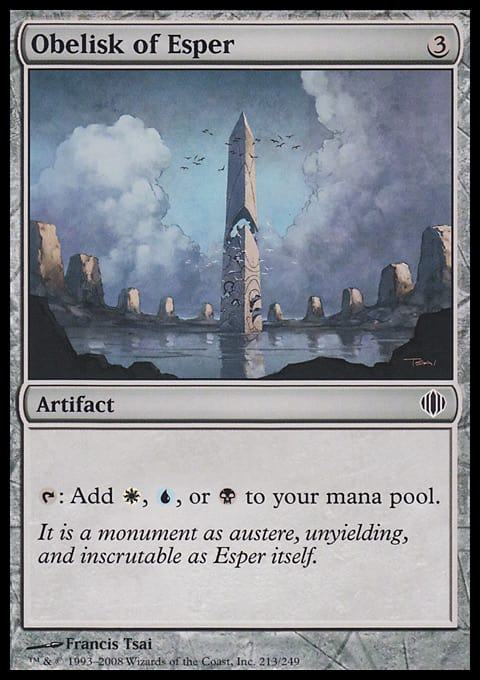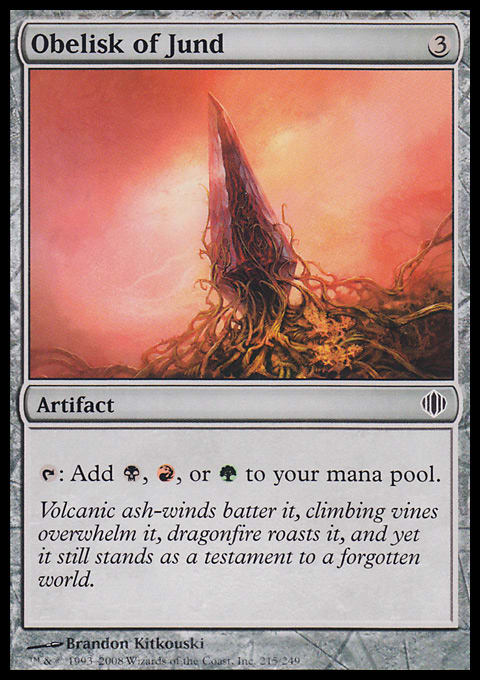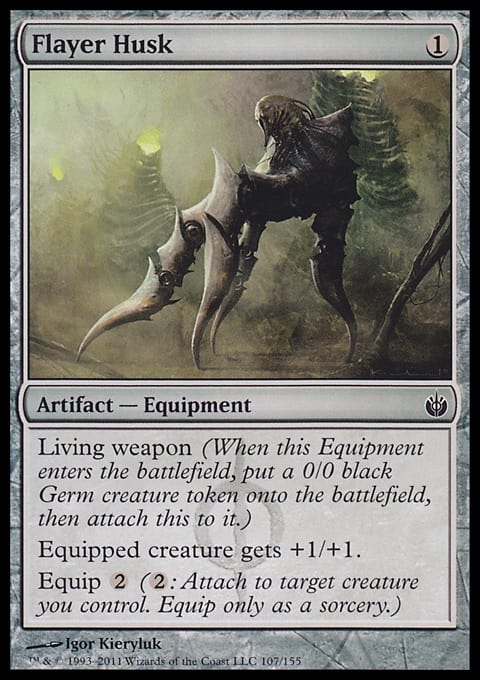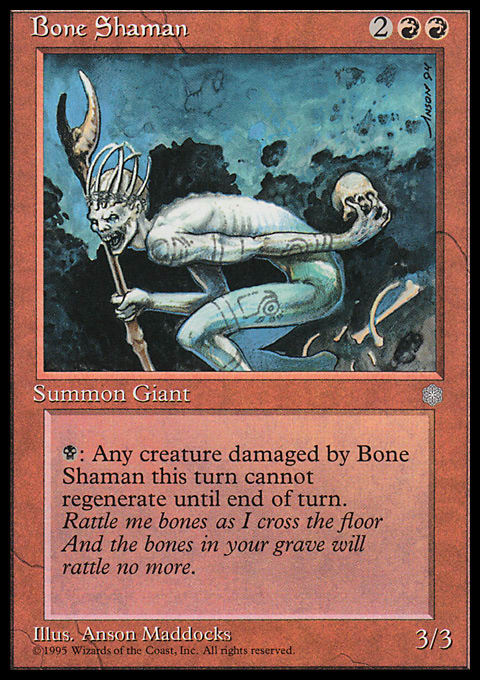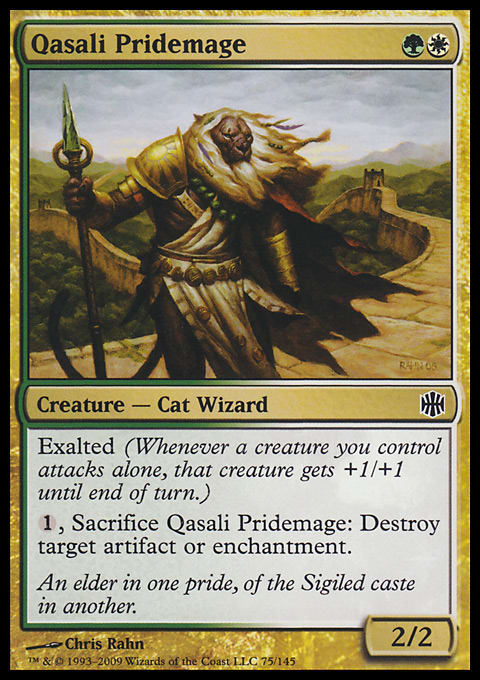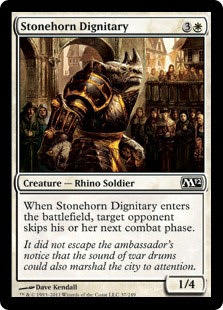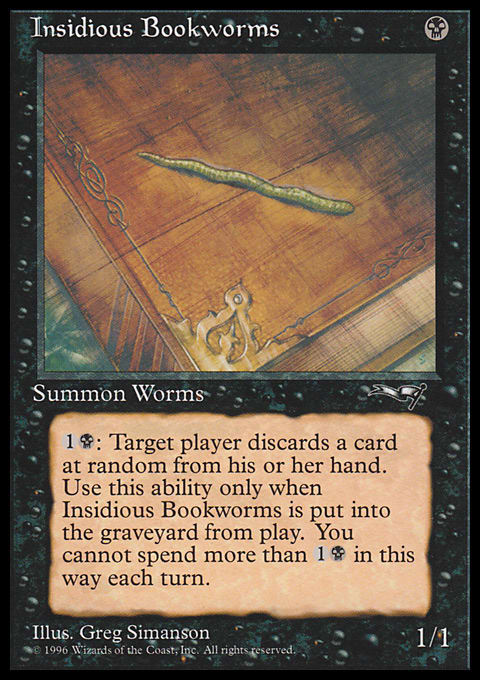I began playing the Cube Draft format back in 2010. I teamed up with a good friend of mine, and we built a “Cube of Doom” together. You can read all about it here. Over the last few years, thanks to the fine writing about the Pauper format by Adam Styborski and Jason Moore, I’ve become interested in constructing my own Pauper Cube.
I’d like to invite you along for the ride on this Cube’s design. I’m going to walk you through my design process and offer helpful tips along the way. Though I’ll be building a Pauper Cube, this process could really be used for designing any type of Cube. If I do my job well, after reading this article, you will be able to pull out your cards and get started on your Cube today.
So, without further ado . . .
Start by Identifying Your Design Goals
Every Cube design should begin with a clear sense of where you want to go. You’re probably identifying goals already, perhaps without realizing it. Try to answer these questions:
What do you want your Cube to do?
What do you want it to feel like? Aggressive? Combo-based? Creature-heavy? Multicolored? A little bit of everything?
What experiences do you want people to have when they play your Cube?
What types of cards are you hoping to cast while playing your Cube?
Answering these types of questions will help you narrow down your goals and create the Cube you want. Here are the goals for my Pauper Cube (in no particular order):
- I want to only use cards I already own. More on this in a moment. Suffice it to say that I didn’t want to go shopping in order to construct my Cube.
- Play the highest-value commons possible. For every mana tapped, I want to get as much bang for my buck as possible. An easy way to see how some cards are more valuable than others is by comparing old cards with new cards that do the same thing—such as with Keepers of the Faith and Armored Warhorse. But value is more of a challenge to discern as cards become more complex.
- I wanted most of my cards to have options. This means my creatures are more than creatures. They fetch lands, remove something, or have some other effect beyond their power and toughness. This means I tried to use instants and sorceries with kicker costs or other abilities for extra effects. I basically want to always be holding a hand of options when I play this Cube.
- I wanted to intentionally build a small Cube. Most Cubes are four hundred or more cards. My Pauper Cube was initially only three hundred sixty cards. If you’re new to Cube design, I don’t recommend starting this small. Save yourself a headache, and go for four hundred instead. It’s very hard to make choices when Cubes become this small.
A Template to Get Us Going
Because I wanted to build a small Cube, I started out with a basic template that I could fill in. If you’re building a Cube for the first time—even if it’s not a Pauper Cube—you could use this template or create something similar.
| 50 white cards | 25 creatures | 25 other spells |
| 50 blue cards | 20 creatures | 30 other spells |
| 50 black cards | 25 creatures | 25 other spells |
| 50 red cards | 25 creatures | 25 other spells |
| 50 green cards | 30 creatures | 30 other spells |
| 50 colorless (land/artifact/Eldrazi) | Undetermined | undetermined |
| 60 multicolored (6 cards for each color pair) | Undetermined | undetermined |
| Total = 360 cards | ||
|---|---|---|
The template includes a higher creature count in green because it’s such a creature-oriented color. Blue has a high number of other spells because it has some great instants and sorceries and acts as a nice balance to green.
In the end, my numbers were a little different than the template. I still ended with three hundred sixty cards, but with twenty-six white creatures and twenty-four other spells and other small changes like that. This template still served as a good way to start me off. It also helped me avoid the common design mistake of just throwing in every cool card you own and ending up with a really imbalanced Cube.
In addition to this template, I included a few card cycles in my Cube. I highly recommend this, too, especially if you’re constructing a Cube for the first time. Again, it will help you keep your Cube balanced, and it is flavorfully cool. In the initial draft of my Cube, I included three cycles: the Return to Ravnica block Guildgates; the Shards of Alara Obelisks; and the New Phyrexia Souleaters.
Buying Cards Versus Not Buying Cards for Cube Draft
I’ve read a number of other Cube Draft players say that the first thing you should do before building a Cube is to set a budget. Some may even encourage you to invest in a large number of card sleeves right off the bat. I’d like to challenge these notions a little bit. Here we go:
Setting any kind of monetary barrier on a format is a surefire way to kill it—or at the very least prevent it from growing.
The decline of Legacy tournaments and the rise of Modern tournaments are an example of this happening. Setting a budget for your Cube could be a helpful tool. Many players want to play with the classic expensive cards, or they want their Cubes to be all foil, or signed, or Japanese, or in some other way enhanced. For them, a budget is helpful. But for the rest of us, I think it’s an unnecessary way to start that gets people off on the wrong foot. I don’t think Cube designers should start out by thinking about buying cards because then they’re thinking about money instead of the game. Rather, they should start out by going deep into their collections and flexing their creative muscles.
Any player who has around four hundred different cards can build a Cube.
Sure, it won’t be a great Cube if you literally only have four hundred different cards. It will probably be imbalanced and sport a few terrible cards, but you can still do it. I just hope players know that if they want to start designing Cubes and playing the format, they don’t have to wait until they own Karn Liberated, or six hundred sleeves, or the lands from the Un- sets, or anything like that. They can just grab their cards and start designing their Cubes today.
Reaching Goal #1: Using Cards I Already Own
I created this goal for two reasons. First, I wanted to support my earlier statements, and second, I wanted to see if there were uncovered treasures buried in my collection.
Achieving this goal was more challenging than I thought. At the time when I built this Cube, my collection boasted over four thousand two hundred unique cards. But even with that number, it was hard to find six commons for each multicolored pairing. Because I was committed to having six cards for each of the ten color pairs in the Cube, I ended up with some real lemons in my first card list. Most of my multicolored cards at the time were uncommon or rare. (Note: I built this Cube before Dragon’s Maze released and without a large number of Ravnica-block or Return to Ravnica cards.) So, the initial Cube list included cards such as Stream Hopper in the U/R category, Bone Shaman in B/R, and Strength of Night in G/B. All of these cards were cut as soon as I picked up better commons that represent these color pairs. But in my initial games, they were present.
As you construct your Cube, you may want to consider the limits to your collection up front. I didn’t, and I paid for it in games when I was stuck holding Bone Shaman instead of something better such as Spawn of Rix Maadi.
Did this goal help me uncover any treasures within my collection? Perhaps a card I owned but had hardly ever played before? Indeed it did: Congregate.
Reaching Goal #2: On the Hunt for Value
In my quest for high-value commons, I ended up searching for cards that are constant threats. Commons are often one-and-done cards. You have a single use out of them, and they’re in the graveyard. There are, however, a number of keywords that give commons cards a second chance. When building your Cube, search your collection for these keywords: flashback, unearth, undying, extort, persist, evolve, cipher, buyback, clash, rebound, and others. Cards with these types of keywords are constantly bugging your opponent. They force opponents to often waste two cards on only one of yours—the definition of high value.
Awesome, On One Condition
Some cards have high value only if the conditions are perfect for them. Though if the conditions aren’t perfect, they’re usually mediocre to poor cards (especially at common). For example, Bloodrage Vampire is a pretty good common (3 mana for a 4/2 creature) if the bloodthirst is activated. If not, it’s a 3-mana creature that can’t stand up to a Serra Zealot. Lame.
Some examples of conditional keywords are bloodthirst, detain, some kicker abilities, devour, soulbond, storm, and many enters-the-battlefield (ETB) abilities. Because I built a Pauper Cube, I used cards with these keywords pretty sparingly. Even in the higher rarities, though, I think it’s wise to scrutinize conditional abilities. Ask yourself, “With the Cube I’ve built, how often is X scenario actually going to happen in a game?”
In regards to cards with ETB abilities, I found myself drawn to removal, ramp, tutors, and card-draw. Sylvan Ranger, Sea Gate Oracle, and Manic Vandal all made it into my initial list. One way to get started filling out your Cube is to think through what ETB abilities will help you achieve your goals and go from there.
Reaching Goal #3: Cards with a Lot of Options
During the design process, I looked for cards with options. This is related to the second goal because a card with options is typically a high-value card, even if the mana cost for the card is high (e.g. Spite // Malice).
The Cube Draft format often leads to strange plays and difficult board states. In these situations, having a card that can do two different tasks is essential—Qasali Pridemage is a great example. He’s a creature for attacking or blocking, and if needed, you can use him as a removal spell. On top of that, he grants an exalted bonus for other attacking creatures. Some keywords that indicate a card has options are cycling, kicker, morph, blood rush, channel, transmute, and others I’m sure I’ve forgotten (or haven’t yet been printed).
Other cards to look for as you build your Cube are those with alternate casting costs. These surprise bursts are often the killing stroke for a big creature on the battlefield or your opponent. Just when the opponent believes you are all tapped out, you swoop in and destroy his last hope. Casting Fireblast by sacrificing two tapped Mountains and dealing a surprise 4 damage to your opponent is a great way to win a game.
Reaching Goal #4: Keeping It Down to 360
As I mentioned earlier, this was a real challenge. It was hard to cut cards, especially favorites. For example, I really like Stonehorn Dignitary—flavorfully and mechanically. But I didn’t include it in my initial list. It was nonessential to achieving my goals, and it slows games down. Even though it’s a favorite, it had to go.
What helped me pare things down was staying focused on what I set out to do. A card with options received higher consideration than a similar card without options. Cards that make a real difference on the battlefield without costing a lot were also considered first. And more than anything else, the template I was using helped me to say “no” to a lot of cards. I hope the cream rose to the top, giving me a Cube filled with high-powered commons.
So, How Did It Play?
After I finally had the Cube designed and assembled (it took me almost three weeks), I scheduled a game night with my buddy Adam and occasional Gathering Magic writer (and card alterer) Drew Sitte. We completed three Drafts and three games. Everything played very smoothly. I was initially afraid that I had too many small creatures in the Cube and that games might feel underwhelming, but it didn’t work out that way. The colors felt balanced, the creature-to-spell ratio felt good (perhaps a little creature-light), and all of us were able to easily run three or more colors in our decks.
Since the Cube was first designed (and since this article was written), I’ve run more Drafts and made updates. So, specific cards referenced above may or may not still be in the Cube. You can see my Pauper Cube in its current state on Deckbox.org or on Google Drive. I’d love to hear your thoughts on how to improve it.
Suggested Further Reading and Cubes to Explore
When I began cubing in 2010, I read every article I could find by Tom LaPille and nearly every page on Evan Erwin’s CubeDrafting.com. You can see a current list of Evan’s Cube, or the list for Tom’s Cube before he joined Magic R&D.
If you’re a fan of the Pauper format, following Adam Styborski’s Pauper Cube updates here on Gathering Magic is a must. You can see his current Cube list here.
Also, there a few articles on DailyMTG by Tom LaPille and Max McCall about the Magic Online Cube. See “Power Cubed” and “The Cube has Six Faces.”
"Andrew Rogers’s Pauper Cube"
- Creatures (177)
- 1 Acridian
- 1 Adaptive Snapjaw
- 1 Adder-Staff Boggart
- 1 Ambush Viper
- 1 Armored Warhorse
- 1 Ashmouth Hound
- 1 Augury Owl
- 1 Auramancer
- 1 Basilica Guards
- 1 Basilica Screecher
- 1 Battle Rampart
- 1 Battle-Rattle Shaman
- 1 Benalish Trapper
- 1 Blind Hunter
- 1 Blind Zealot
- 1 Blood Ogre
- 1 Blood Seeker
- 1 Bogardan Rager
- 1 Bone Shaman
- 1 Briarberry Cohort
- 1 Brighthearth Banneret
- 1 Chartooth Cougar
- 1 Cloud Elemental
- 1 Cloud Sprite
- 1 Cloudchaser Eagle
- 1 Cloudfin Raptor
- 1 Cloudskate
- 1 Concordia Pegasus
- 1 Crocanura
- 1 Death-Hood Cobra
- 1 Deft Duelist
- 1 Delver of Secrets
- 1 Deranged Assistant
- 1 Doomed Traveler
- 1 Drakewing Krasis
- 1 Dregscape Zombie
- 1 Elgaud Inquisitor
- 1 Elves of Deep Shadow
- 1 Erdwal Ripper
- 1 Essence Warden
- 1 Fertilid
- 1 Festerhide Boar
- 1 Flame Spirit
- 1 Flamewave Invoker
- 1 Frilled Oculus
- 1 Frogtosser Banneret
- 1 Furnace Scamp
- 1 Garruk's Companion
- 1 Goblin Arsonist
- 1 Goblin Electromancer
- 1 Goblin Tunneler
- 1 Gorilla Berserkers
- 1 Gorilla Chieftain
- 1 Gravedigger
- 1 Hand of Emrakul
- 1 Helionaut
- 1 Highborn Ghoul
- 1 Hinterland Hermit
- 1 Igneous Pouncer
- 1 Infantry Veteran
- 1 Initiates of the Ebon Hand
- 1 Inner-Flame Acolyte
- 1 Ivory Giant
- 1 Jhessian Zombies
- 1 Keening Apparition
- 1 Kingpin's Pet
- 1 Kird Ape
- 1 Kjeldoran Dead
- 1 Kor Cartographer
- 1 Kor Hookmaster
- 1 Kor Sanctifiers
- 1 Leonin Skyhunter
- 1 Living Airship
- 1 Llanowar Elves
- 1 Lobber Crew
- 1 Looming Shade
- 1 Mad Prophet
- 1 Manic Vandal
- 1 Manor Skeleton
- 1 Mesmeric Fiend
- 1 Metropolis Sprite
- 1 Mist Leopard
- 1 Mnemonic Wall
- 1 Mold Shambler
- 1 Mulldrifter
- 1 Nest Invader
- 1 Ninja of the Deep Hours
- 1 Nomadic Elf
- 1 Ogre Savant
- 1 Penumbra Spider
- 1 Peregrine Griffin
- 1 Phantasmal Bear
- 1 Phyrexian Battleflies
- 1 Phyrexian Debaser
- 1 Phyrexian Monitor
- 1 Phyrexian Rager
- 1 Qasali Pridemage
- 1 Quag Vampires
- 1 Reckless Scholar
- 1 Reliquary Monk
- 1 Rootbreaker Wurm
- 1 Sacred Wolf
- 1 Scrivener
- 1 Sea Gate Oracle
- 1 Selesnya Evangel
- 1 Sewer Shambler
- 1 Shambleshark
- 1 Shinen of Fury's Fire
- 1 Shinen of Life's Roar
- 1 Sighted-Caste Sorcerer
- 1 Sightless Ghoul
- 1 Silverglade Elemental
- 1 Skitter of Lizards
- 1 Slippery Bogle
- 1 Soltari Foot Soldier
- 1 Soltari Trooper
- 1 Soul's Attendant
- 1 Spire Tracer
- 1 Steamcore Weird
- 1 Steppe Lynx
- 1 Stingmoggie
- 1 Stitched Drake
- 1 Stonefare Crocodile
- 1 Stormbound Geist
- 1 Stream Hopper
- 1 Surveilling Sprite
- 1 Suture Priest
- 1 Sylvan Ranger
- 1 Terrus Wurm
- 1 Thorn-Thrash Viashino
- 1 Tormented Soul
- 1 Towering Thunderfist
- 1 Trapjaw Kelpie
- 1 Trestle Troll
- 1 Tukatongue Thallid
- 1 Ulamog's Crusher
- 1 Ulvenwald Bear
- 1 Undertaker
- 1 Urborg Elf
- 1 Vampire Bats
- 1 Viashino Racketeer
- 1 Village Bell-Ringer
- 1 Viridian Emissary
- 1 Vithian Stinger
- 1 Wall of Distortion
- 1 Wall of Fire
- 1 Wall of Glare
- 1 Wall of Resistance
- 1 Wall of Vapor
- 1 Wild Nacatl
- 1 Wispmare
- 1 Wojek Halberdiers
- 1 Yavimaya Elder
- 1 Yavimaya Wurm
- 1 Young Wolf
- 1 Zhur-Taa Swine
- 1 Armored Transport
- 1 Blinding Souleater
- 1 Esper Cormorants
- 1 Etherium Abomination
- 1 Hovermyr
- 1 Insatiable Souleater
- 1 One-Eyed Scarecrow
- 1 Oxidda Golem
- 1 Pestilent Souleater
- 1 Phyrexian Hulk
- 1 Pilgrim's Eye
- 1 Pith Driller
- 1 Razorfield Thresher
- 1 Reinforced Bulwark
- 1 Sarcomite Myr
- 1 Slash Panther
- 1 Spin Engine
- 1 Thundering Tanadon
- 1 Trespassing Souleater
- 1 Vault Skirge
- 1 Wall of Tanglecord
- Spells (166)
- 1 Ancient Grudge
- 1 Apostle's Blessing
- 1 Auger Spree
- 1 Avenging Arrow
- 1 Avoid Fate
- 1 Blazing Salvo
- 1 Bone to Ash
- 1 Brainstorm
- 1 Branching Bolt
- 1 Broken Ambitions
- 1 Cancel
- 1 Catalog
- 1 Chandra's Outrage
- 1 Congregate
- 1 Counterspell
- 1 Curtain of Light
- 1 Dark Ritual
- 1 Dead // Gone
- 1 Death of a Thousand Stings
- 1 Desperate Ravings
- 1 Disenchant
- 1 Dismantling Blow
- 1 Disperse
- 1 Doom Blade
- 1 Executioner's Swing
- 1 Expunge
- 1 Feeling of Dread
- 1 Fiery Fall
- 1 Fireblast
- 1 Flash Flood
- 1 Footbottom Feast
- 1 Forbidden Alchemy
- 1 Geistflame
- 1 Gerrard's Command
- 1 Giant Growth
- 1 Gnaw to the Bone
- 1 Grisly Salvage
- 1 Harrow
- 1 Hearth Charm
- 1 Howl from Beyond
- 1 Inspiration
- 1 Lightning Bolt
- 1 Lull
- 1 Mana Leak
- 1 Moment of Silence
- 1 Murder
- 1 Mutagenic Growth
- 1 Naturalize
- 1 Psychic Strike
- 1 Ray of Command
- 1 Ray of Revelation
- 1 Rebuke
- 1 Recoil
- 1 Repulse
- 1 Respite
- 1 Scatter Arc
- 1 Scrap
- 1 Searing Blaze
- 1 Shattering Blow
- 1 Smite
- 1 Snuff Out
- 1 Soul Manipulation
- 1 Stave Off
- 1 Strength of Night
- 1 Sylvan Bounty
- 1 Terminate
- 1 Tragic Slip
- 1 Unmake
- 1 Unsummon
- 1 Vampire's Bite
- 1 Vapor Snag
- 1 War Report
- 1 Wildwood Rebirth
- 1 Withstand Death
- 1 Wrecking Ball
- 1 Faerie Trickery
- 1 Wings of Velis Vel
- 1 Absorb Vis
- 1 Act of Treason
- 1 Ancient Stirrings
- 1 Angelic Edict
- 1 Ashes to Ashes
- 1 Befoul
- 1 Blightning
- 1 Blood Tithe
- 1 Breath of Life
- 1 Careful Study
- 1 Deep Analysis
- 1 Destroy the Evidence
- 1 Disintegrate
- 1 Dry Spell
- 1 Duress
- 1 Explore
- 1 Faithless Looting
- 1 Fireball
- 1 Firebolt
- 1 Foresee
- 1 Gather the Townsfolk
- 1 Haunting Misery
- 1 Horrifying Revelation
- 1 Hull Breach
- 1 Hunters' Feast
- 1 Icefall
- 1 Innocent Blood
- 1 Iona's Judgment
- 1 Kaervek's Torch
- 1 Mind Swords
- 1 Ponder
- 1 Remember the Fallen
- 1 Revoke Existence
- 1 See Beyond
- 1 Sever Soul
- 1 Shrivel
- 1 Skyshroud Claim
- 1 Sleight of Hand
- 1 Stone Rain
- 1 Syphon Soul
- 1 Temporal Fissure
- 1 Theft of Dreams
- 1 Traitorous Blood
- 1 Travel Preparations
- 1 Abundant Growth
- 1 Alexi's Cloak
- 1 Armadillo Cloak
- 1 Arrest
- 1 Bonds of Faith
- 1 Chant of the Skifsang
- 1 Conviction
- 1 Encrust
- 1 False Demise
- 1 Forced Adaptation
- 1 Forced Worship
- 1 Goblin War Drums
- 1 Goblin War Paint
- 1 Guardian Zendikon
- 1 Hyena Umbra
- 1 Journey to Nowhere
- 1 Launch
- 1 Madcap Skills
- 1 Mark of Fury
- 1 Pacifism
- 1 Pestilence
- 1 Rancor
- 1 Sluggishness
- 1 Snake Umbra
- 1 Stormcaller's Boon
- 1 Tin Street Market
- 1 Accorder's Shield
- 1 Armillary Sphere
- 1 Bladed Pinions
- 1 Blazing Torch
- 1 Boros Signet
- 1 Cobbled Wings
- 1 Dimir Signet
- 1 Flayer Husk
- 1 Kitesail
- 1 Obelisk of Bant
- 1 Obelisk of Esper
- 1 Obelisk of Grixis
- 1 Obelisk of Jund
- 1 Obelisk of Naya
- 1 Pristine Talisman
- 1 Selesnya Signet
- 1 Vorrac Battlehorns
- 1 Wanderer's Twig
- 1 Whispersilk Cloak
- Lands (17)
- 1 Azorius Guildgate
- 1 Boros Garrison
- 1 Boros Guildgate
- 1 Evolving Wilds
- 1 Golgari Guildgate
- 1 Gruul Guildgate
- 1 Haunted Fengraf
- 1 Izzet Boilerworks
- 1 Naya Panorama
- 1 Orzhov Guildgate
- 1 Quicksand
- 1 Rakdos Guildgate
- 1 Rupture Spire
- 1 Shimmering Grotto
- 1 Simic Guildgate
- 1 Terramorphic Expanse
- 1 Transguild Promenade
















